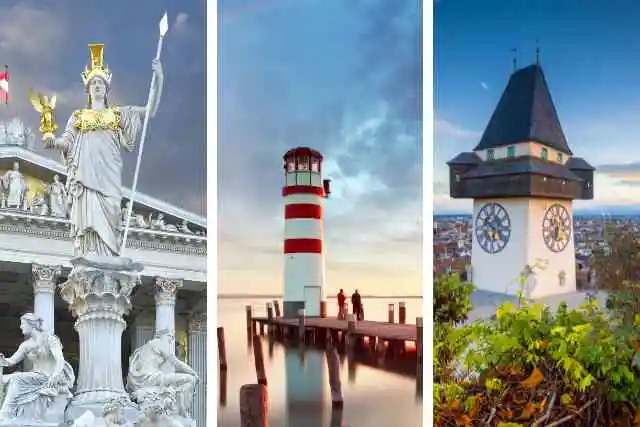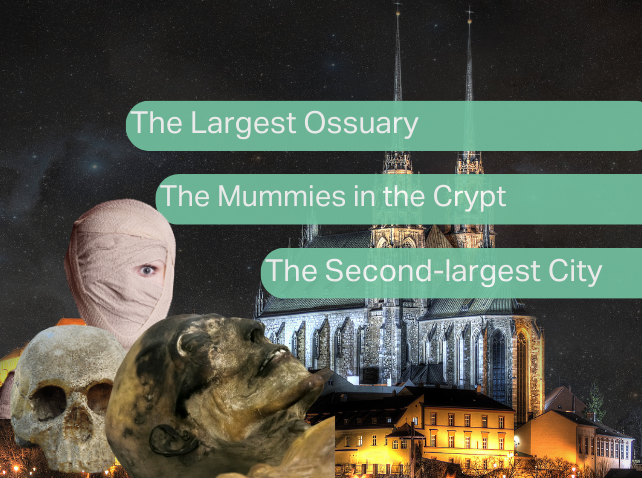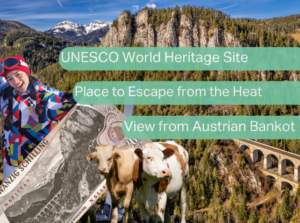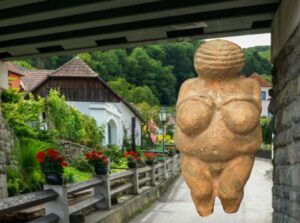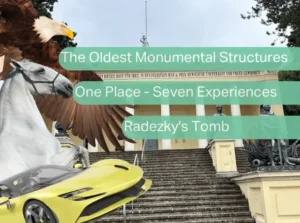Explore the vibrant history and culture of Brno, a city where medieval architecture meets modern life. From ancient castles and legends to innovative art and dynamic festivals, Brno offers something for everyone. Discover why this Moravian gem is one of the most captivating destinations in the Czech Republic.

Book
Austria by Public Transport
Discover Austria like never before with “Austria by Public Transport.” This book is your ultimate guide to exploring the beauty of Austria easily and affordably. Get your copy today and start your adventure!
The Second Largest City
in the Czech Republic
Brno is the second-largest city in the Czech Republic, with almost 400,000 residents. It has many historical attractions, serves as the centre of Moravia, and is a strong industrial hub. Brno is also home to 10 universities, making it an important place for education.
The Name –
Where Does It Come From?
The name “Brno” probably comes from the old word “brný,” which means “clay.” People believe that the castle stood on a clay and muddy area. At first, only the castle was called Brno, but later, the name was used for the whole settlement.
A Brief History of Brno
Early Days and Growth
People lived in Brno from the Neolithic period, and the first Slavic settlers arrived in the 5th century. The first record of Brno comes from the 11th century when a castle was built here. In the 12th century, they started making coins, which shows Brno’s importance. Brno became a royal city in the 13th century, and it soon became the main city of Moravia, hosting Moravian assemblies that shaped the future of the duchy.
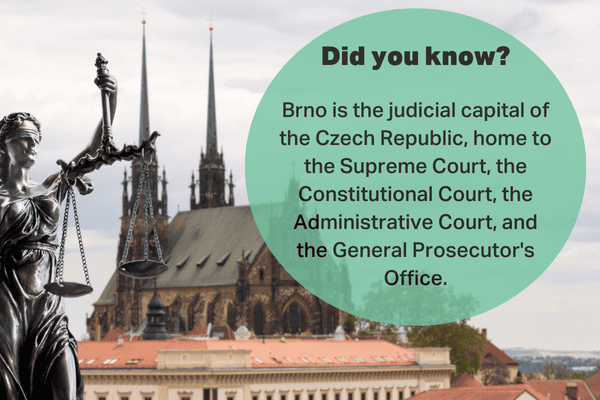
Brno in the 19th Century
In the 19th century, a railway connected Brno to Vienna, which brought more growth. During this time, they started to remove the old city walls. The city also began to modernize its buildings, which gave Brno a new look.
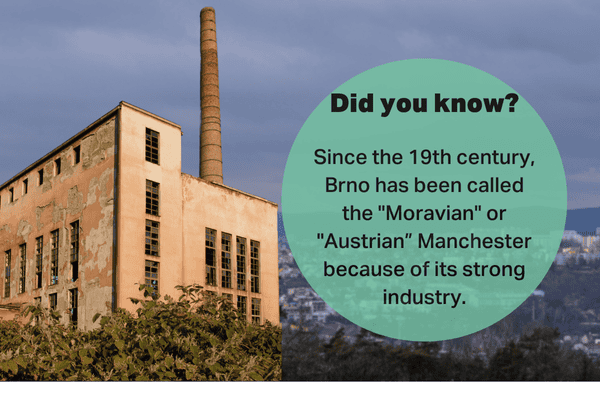
The Battle of Austerlitz
The Battle of Austerlitz (Bitva u Slavkova), also known as the Battle of the Three Emperors, took place near Brno on December 2, 1805. It was one of Napoleon’s most significant victories against the combined Austrian and Russian armies. The battle demonstrated Napoleon’s strategic genius, as he lured his enemies into a weak position. Although he had fewer soldiers (73,000 French vs. 85,400 allies), his tactics and the foggy weather played a crucial role. After the battle, the Treaty of Pressburg changed Europe’s political landscape. Today, the battlefield features monuments and museums commemorating this historic event.

The Multicultural Brno
At the start of the 20th century, most people in Brno spoke German (63%), while the nearby villages spoke Czech. Brno was a multicultural and multilingual city. However, the First and Second World Wars changed this. During World War II, Brno became part of Nazi Germany. Many Jewish residents were killed or forced to leave. After the war, German-speaking people were also expelled, Protestant churches were closed, and the government took over the property of Roman Catholic churches.
The Jewish Community in Brno
Jews settled in Brno in the 13th century, and their community grew until the 15th century. In 1454, the king, under pressure from a Catholic preacher named Jan Kapistrán, expelled them. For almost 400 years, Jews could not live in Brno. But in 1849, they received equal rights, and many returned. They built a synagogue, established a cemetery, and formed a strong community. By 2010, the Jewish community had become an important part of Brno’s economy.
Brno is a city with a rich history, beautiful architecture, and many interesting stories to discover. Whether you’re walking down Masarykova Street or exploring the old castle, you can feel the history all around you.
Dark Times of Occupation
The Protectorate of Bohemia and Moravia (Protektorát Čechy a Morava) existed from 1939 to 1945 as an administrative unit under Nazi rule. Formed after Germany occupied these regions, Emil Hácha signed an agreement establishing the protectorate. The Nazi regime enforced harsh measures, including arrests of Jews and communists. The assassination of Reinhard Heydrich in 1942 led to severe reprisals, such as the destruction of Lidice and Ležáky. The protectorate ended in 1945 after the liberation.

The German Heritage
The terms German Bohemia (Německé Čechy) and German Moravia (Německá Morava) refer to the German-speaking residents in these regions. The history began in the 12th and 13th centuries when settlers from Bavaria and Franconia arrived, contributing to the region’s development. After World War II, the Beneš Decrees led to the expulsion of around 3 million Germans, a tragic and often brutal process. Today, only a small German minority remains in the Czech Republic, but efforts continue to promote understanding and cooperation.
The Brno Death March
(Brünner Todesmarsch)
The Brno Death March (Brünner Todesmarsch) began on May 31, 1945, marking a tragic moment in Brno’s history. It involved the forced expulsion of around 27,000 German-speaking residents, mainly women, children, and the elderly, who marched 55 kilometers towards the Austrian border. Many died from exhaustion, hunger, and disease. Today, memorials in Brno and Austria honor those who suffered during this dark time, serving as reminders of the need for remembrance and reconciliation.


Kordian
Hey, it’s me, Kordian! I spend like 10 to 20 hours on each post just for you. This website is my main source of income. If you enjoy using it regularly, I’d totally appreciate your financial support. Your help means a lot and keeps the content coming. Thanks a bunch!
Brno –
Most Famous Landmarks
Brno is a city full of history and culture, with many fascinating places to discover. Here are some of the must-see sites that you should visit when exploring this vibrant city.
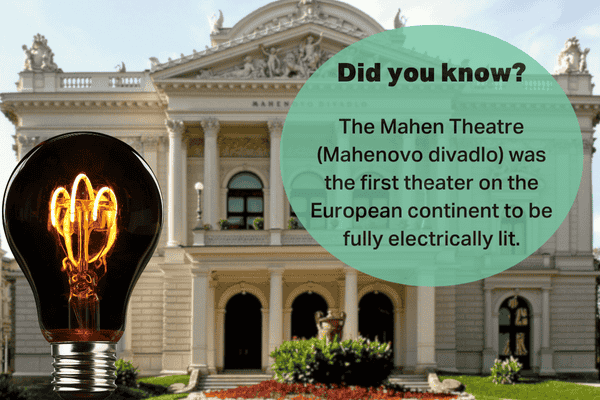
Brno Main Railway Station
The Brno Main Railway Station (Brno Hlavní Nádraží) opened in the late 1830s as part of the Northern Railway of Emperor Ferdinand (Severní dráha císaře Ferdinanda). The first train arrived in 1838, and regular service began in 1839. Over the years, the station underwent many changes, including a major Art Nouveau renovation between 1902–1905. Today, it’s a protected monument and remains an essential part of Brno’s transportation network.

Masaryk Street
(Ulice Masarykova)
Masaryk Street (Ulice Masarykova) is Brno’s main and busiest pedestrian street, connecting Freedom Square (náměstí Svobody) with the Main Train Station (Hlavní nádraží). Its history goes back to medieval times when it was known as Sedlářská. In the 19th century, it was named after Emperor Ferdinand I, and after the creation of Czechoslovakia, it became Masaryk Street, named after Tomáš Garrigue Masaryk, the first president of Czechoslovakia. During the communist era, it was called Victory Avenue, but its original name returned in 1989. The street is not only an important route but also a place full of historical buildings and attractions, making it the heart of Brno’s city life.
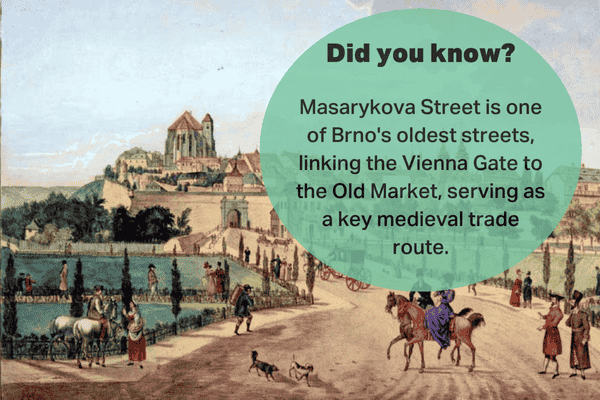
The Church of the Finding
of the Holy Cross
(Kostel Nalezení svatého Kříže)
The Church of the Finding of the Holy Cross (Kostel Nalezení svatého Kříže) in Brno, built between 1648–1656, is a Baroque church connected to the Capuchin Order (kapucíni). Located on Capuchin Square (Kapucínské náměstí), it is one of Brno’s most significant monuments. In the church’s underground lies the Capuchin Crypt (Kapucínská hrobka), where a unique ventilation system led to the natural mummification of some buried bodies. The main altar features a painting by Joachim von Sandrart from 1655, showing the discovery of Christ’s Cross. A notable detail is the relic of the Holy Cross, gifted by Princess Polyxena of Lobkowicz (Polyxena z Lobkovic) in 1636, stored in a richly decorated silver box.
The Capuchin Crypt
(Kapucínská hrobka)
The Capuchin Crypt (Kapucínská hrobka) is one of Brno’s most intriguing places, drawing visitors with its unique history and atmosphere. Established in 1656 under the Church of the Finding of the Holy Cross (Kostel Nalezení svatého Kříže), it served as a burial place for Capuchin monks and the order’s benefactors until 1784. Thanks to the special ventilation system, the bodies naturally mummified. Among the buried is Baron Franz Trenck (František Trenck), whose remains lie in a decorative zinc coffin. The Capuchins were buried in simple wooden coffins, reflecting the order’s spirit of poverty. The crypt is open to visitors all year.
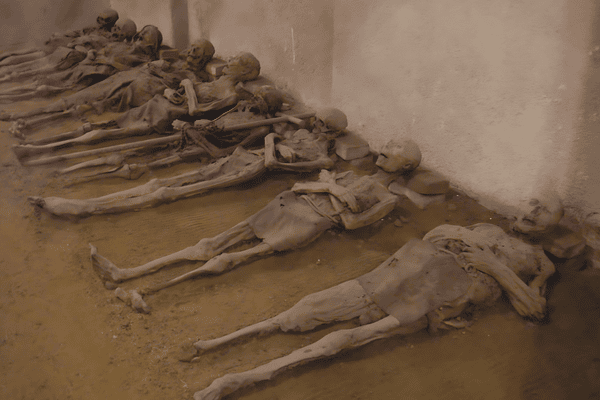
The Bishop’s Courtyard
(Biskupský dvůr)
The Bishop’s Courtyard (Biskupský dvůr) in Brno is a historic complex of buildings located below the Cathedral of St. Peter and Paul (Katedrála sv. Petra a Pavla). It dates back to 1352 and has been part of the Moravian Museum (Moravské zemské muzeum) since 1818. The original Gothic building served as the chapter’s seat, and in the 16th century, Bishop Stanislav II. Pavlovský transformed it into a Renaissance palace, designed by Antonio Gabri. Inside, there is a chapel with beautiful frescoes, and the courtyard is surrounded by arcaded loggias. Today, the Bishop’s Courtyard houses museum departments such as zoology, geology, and paleontology, and it hosts exhibitions and cultural events. A rare tree, the princess tree (Paulownia tomentosa), grows in the courtyard.

Moravian Provincial Museum
The Moravian Provincial Museum (Moravské zemské muzeum), founded in 1817, is the oldest museum in Moravia. It holds over 6 million items, including the famous Venus of Dolní Věstonice (Věstonická venuše). The museum offers exhibitions, lectures, and scientific research.
Reduta Theatre
The Reduta Theatre (Divadlo Reduta) in Brno is the oldest theatre in Central Europe. It began as the “New Tavern (Nová taverna)” in 1608. The theatre hosted many famous guests, like Wolfgang Amadeus Mozart, who performed here in 1767. The building went through several fires and renovations. In the 19th century, it became a ballroom. After closing in 1993, it was restored and reopened in 2005. It now combines modern design with its historical charm.
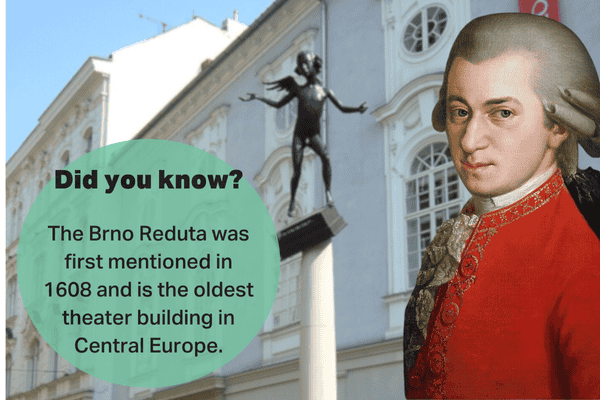
Cabbage Market
(Zelný trh)
The Cabbage Market (Zelný trh), also called “Zelňák”, is one of Brno’s oldest squares. It has been a market since the 13th century, selling vegetables, fruits, and other products. Today, you can admire the Baroque Parnas Fountain (Kašna Parnas) here, designed by Adam Tobias Kracker.
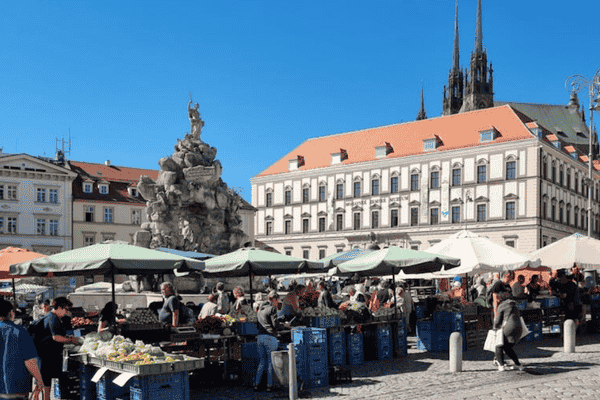
Parnas Fountain
(Kašna Parnas)
The Parnas Fountain (Kašna Parnas) at the Vegetable Market (Zelný trh) in Brno is a stunning Baroque fountain designed by Johann Bernhard Fischer von Erlach and built between 1690–1696. The central part features a limestone rock with a cave, where Hercules is shown fighting Cerberus. At the top of the rock stands an allegorical figure of Europe, symbolizing the Holy Roman Empire. Around it, three female figures represent ancient civilizations: Greece, Babylon, and Persia. The Parnas Fountain is one of the most important Baroque works in Brno and is protected as a cultural monument.

Cathedral of St. Peter and Paul
The Cathedral of St. Peter and Paul (Katedrála sv. Petra a Pavla), also known as Petrov, is one of Brno’s most important monuments. Its history goes back to the 11th century when a Romanesque chapel stood on this site. Over time, it became a Gothic church. In the 18th century, Mořic Grimm renovated the interior in the Baroque style, giving it a new character. Later, in the 19th century, August Kirstein transformed it into the Neo-Gothic form we see today. The cathedral’s towers, 84 meters high, are among Brno’s main symbols and appear on Czech coins. Today, the cathedral serves as both a place of worship and a cultural center, hosting exhibitions and concerts. One interesting feature is the Bethlehem set created by sculptor Heřman Kotrba, combining tradition with modernity.
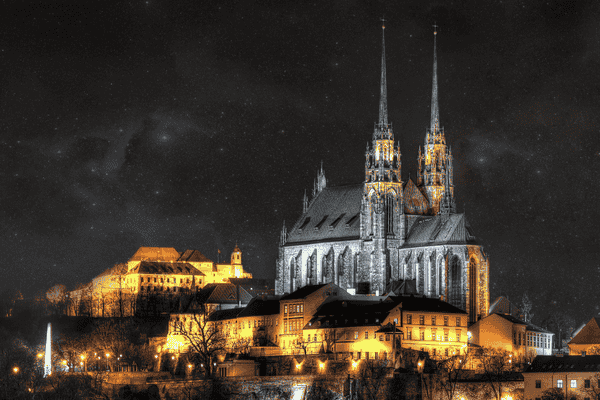
The Old Town Hall
(Stará radnice)
The Old Town Hall (Stará radnice) is the oldest secular building in Brno, dating back to the 13th century. For centuries, it served as the city hall, and you can still see its beautiful Gothic portal with a crooked finial (fiála), crafted by Antonín Pilgram. According to legend, he bent it because he didn’t receive full payment. The Old Town Hall has two famous symbols of Brno: the Brno Wheel (Brněnské kolo) and the Dragon (Drak). The wheel was delivered from Lednice to Brno in one day, while the dragon is actually a stuffed crocodile!

Anton Pilgram
Anton Pilgram was a famous Moravian architect and sculptor (around 1460–1515). He worked on many important buildings in Brno and Vienna. In Brno, he created the twisted finial of the Old Town Hall (Stará radnice) and worked on the Church of St. James (Kostel sv. Jakuba). In Vienna, he led the construction of St. Stephen’s Cathedral (Stephansdom) from 1511. His famous works include the organ loft (Orgelfuß) and the “Fenstergucker” sculpture. This piece shows a man looking out from a window. He left a strong mark on Gothic architecture in both cities.


Subscribe
Explore Vienna like a local and discover nearby treasures.
Join our mailing list!
The Brno Dragon
(Brněnský drak)
The Brno Dragon (Brněnský drak) is one of Brno’s most famous legends, although it is actually a stuffed crocodile hanging in the passage of the Old Town Hall (Stará radnice). The origin of the dragon isn’t well documented, but some say that Margrave Matthias gifted it to the city in 1608. Other sources suggest that the crocodile was already in Brno around 1578–1579 when it underwent restoration. There’s also a legend that knights brought it from the Crusades. Regardless of its true origin, the Brno Dragon has become one of the city’s symbols, drawing tourists from all over the world.
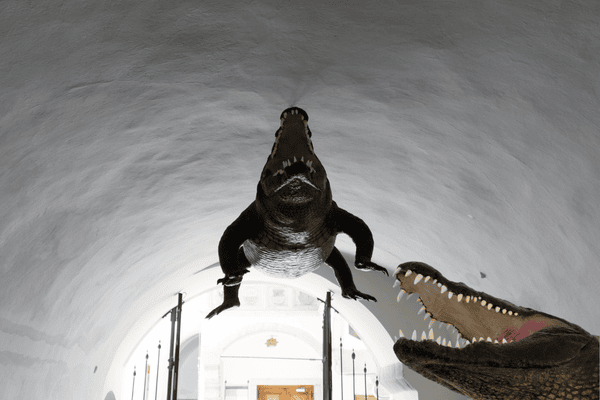
The Brno Wheel
(Brněnské kolo)
The Brno Wheel (Brněnské kolo) is another symbol of the city, and you can see it in the passage of the Old Town Hall (Stará radnice). According to legend, in 1635, a master wheelwright named Georg Birck made a bet that he could cut down a tree, make a wheel, and roll it from Lednice to Brno in one day, covering a distance of 54 km. He succeeded, and the wheel was hung in the town hall as proof of his skill. Although research suggests the wheel wasn’t made in just one day, the legend still lives on, and people try to recreate this amazing feat every year.
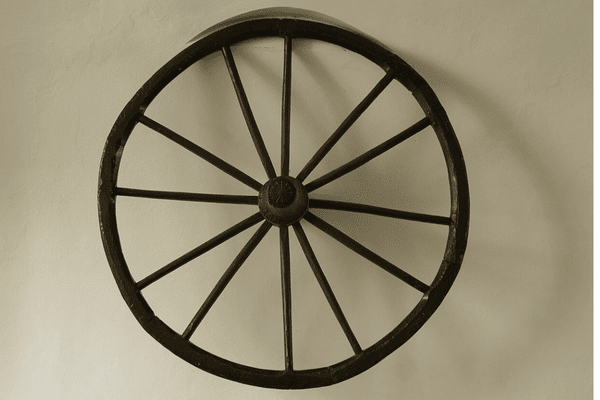
The New Town Hall
(Nová radnice)
The New Town Hall (Nová radnice) is located at Dominican Square (Dominikánské náměstí) and is a complex of Renaissance and Baroque buildings. Since 1935, it has served as the seat of the city authorities. The history of the building goes back to the 13th century when a Dominican monastery stood here, later expanded with court and administrative rooms. Italian architect Pietro Gabri designed the Renaissance part in the 16th century, while Mořic Grimm added Baroque elements in the 18th century. In the past, the building housed the Moravian Estates, but today it is the office of the mayor and the city council.

Freedom Square
(Náměstí Svobody)
Freedom Square (Náměstí Svobody), known as Svoboďák, is the main square in Brno, with a history dating back to the 13th century. It emerged at the intersection of three trade routes, giving it its characteristic triangular shape. In the past, it was called the Lower Market (Dolní trh) or Grosser Platz. The Plague Column (Morový sloup), built in the 17th century, still stands as one of the main attractions. In 1869, the Church of St. Nicholas (kostel sv. Mikuláše) was demolished, which used to be on the square. In 1901, a tram line was added, and in 2010, a modern bullet-shaped clock was installed, commemorating the Swedish siege of Brno in 1645.
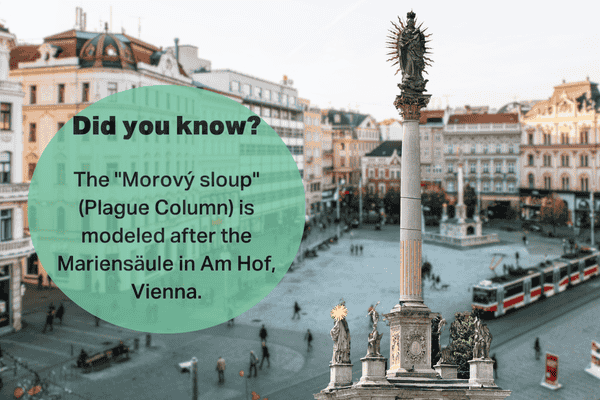
The House of the Lords of Lipá
(Dům pánů z Lipé)
The House of the Lords of Lipá (Dům pánů z Lipé) is a beautiful Renaissance palace located on Freedom Square (náměstí Svobody). The palace dates back to the 16th century when Kryštof Schwanz of Retz (Kryštof Schwanz z Retzu), a wealthy wine merchant, built it on the site of a Gothic house. The Italian architect Antonio Gabri designed the palace, and its facade is decorated with grapevine ornaments. The bay windows have reliefs showing mythological and biblical scenes. In the 19th century, the palace got an extra floor, and during World War II, it suffered damage. After its reconstruction in 2000, it now hosts commercial and cultural events.
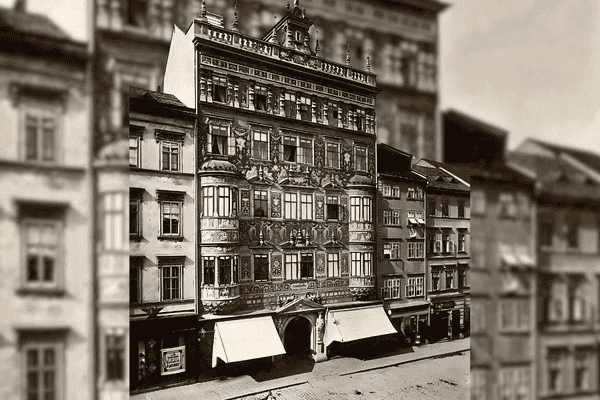
The Brno Time Machine
(Brněnský orloj)
The Brno Time Machine (Brněnský orloj), often called the Brno Bullet, is a modern black granite sculpture on Freedom Square (Náměstí Svobody). It was designed by sculptors Oldřich Rujbr and Petr Kameník and inaugurated on September 18, 2010, to mark the 365th anniversary of Brno’s defense against the Swedes. Every day at 11:00 a.m., a glass ball is released from the sculpture, symbolizing both defense and peace.
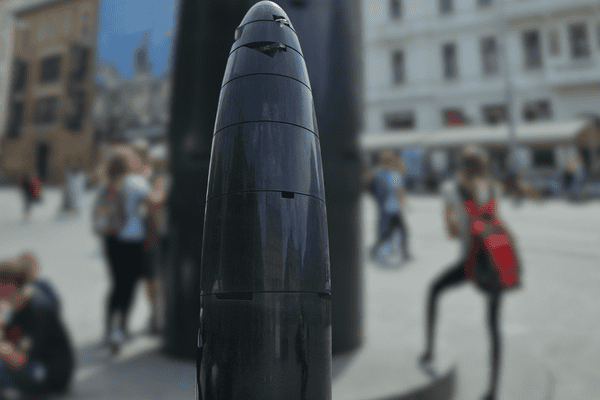
The Plague Column
(Morový sloup)
The Plague Column (Morový sloup) on Freedom Square (náměstí Svobody) in Brno, also known as the Marian Column (Mariánský sloup), is a Baroque structure built between 1679–1683 to honor the victims of the plague that hit the city from 1679–1680. Dedicated to the Virgin Mary and five plague saints, the column features white-gray marble. The statue of the Virgin Mary on top was created by Ferdinand Pfaundler, while the sculptures of saints like St. Roch and St. Sebastian were made by Baltasar Frobel and Jan Kašpar Pröbstl.
Support
Each post on our site takes 10 to 20 hours to prepare, and we’re a small, independent project. We really need your support to keep things going! Your help means everything to us. Please consider supporting us, so we can keep bringing you awesome content.
Thanks for being awesome!
Palace of Noblewomen
(Palác šlechtičen)
The Palace of Noblewomen (Palác šlechtičen) in Brno, built between 1674–1679 by Jan Křtitel Erna (John the Baptist Erna), is a Baroque palace. It was originally for the education of girls from aristocratic families. The palace stands at the corner of Kobližná Street (ulice Kobližná) and Běhounská Street (ulice Běhounská), near Freedom Square (náměstí Svobody). Founded by Countess Jana Magnis in 1654, it was called the Institute of the Presentation of the Virgin Mary (Ústav Obětování Panny Marie). Inside the palace, you can find a beautiful chapel with frescoes by Josef Stern from 1756. Today, the palace is home to the Ethnographic Institute of the Moravian Museum (Etnografický ústav Moravského zemského muzea), where you can enjoy exhibitions, concerts, and see the baroque chapel.

St. James’ Ossuary
(Kostnice u sv. Jakuba)
The St. James’ Ossuary (Kostnice u sv. Jakuba) in Brno is a unique and mysterious place. Located under St. James Square (Jakubské náměstí), it is the second-largest ossuary in Europe, right after the Paris catacombs. The ossuary came to life because there was no more space in the cemetery that used to be in this spot. In 2001, archaeologists rediscovered it, and experts found about 50,000 human remains here. In 2012, the ossuary opened to the public. Today, it attracts many tourists who want to learn about Brno’s history and culture.

The Naughty Little Man
(Neslušný Mužíček)
The story of the Naughty Little Man (Neslušný Mužíček) is one of Brno’s most famous legends. According to the tale, a small sculpture of a man showing his bare bottom towards the Cathedral of St. Peter and Paul (Katedrála sv. Petra a Pavla) is visible in the southern window of St. James Church. The legend says that this was part of a rivalry between the builders of the two churches to see which tower would be taller. St. James Church won this “competition,” with its tower reaching 92 meters, while the cathedral’s towers are 8 meters shorter.
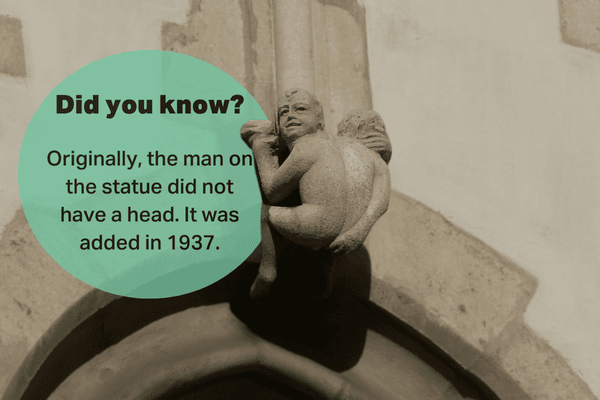
Another version suggests that the cathedral chapter became jealous of the skilled builder working on St. James Church. When they drove him out of the city, his last wish was to complete this window, where he placed this cheeky sculpture. Interestingly, there isn’t just one naughty man in the window, but also a naughty woman (neslušna ženuška), making the scene even more amusing!
Hotel Avion
The Hotel Avion in Brno is an iconic example of functionalism, designed by Bohuslav Fuchs and built between 1926–1928. Located on Česká Street (ulice Česká), it stands out because it was built on a very narrow plot, only 8 meters wide. Despite this, the hotel has 10 floors and 37 rooms, making it one of the narrowest hotels in Europe. In 2010, it became a national cultural monument. The hotel underwent major renovations between 2016–2022 and now serves as a hotel, restaurant, and museum. Visitors can enjoy breathtaking views of Brno from the rooftop terrace.
The Moravian Assembly House
(Zemská sněmovna)
The Moravian Assembly House (Zemská sněmovna) in Brno is an impressive building in the Neo-Renaissance style, designed by Robert Raschka and Anton Hefft. It was built between 1875–1878 to serve as the seat of the Moravian parliament, replacing the previous Estates House (Stavovský dům). Initially planned as a Neo-Gothic structure, it finally adopted an elegant Renaissance style. After the dissolution of the Moravian parliament in 1918, the building became home to various offices. Today, it houses the Constitutional Court of the Czech Republic (Ústavní soud České republiky). The building is famous for its richly decorated facades and monumental interiors, especially the Assembly Hall (Sněmovní sál), which often appears in Czech films and TV shows.
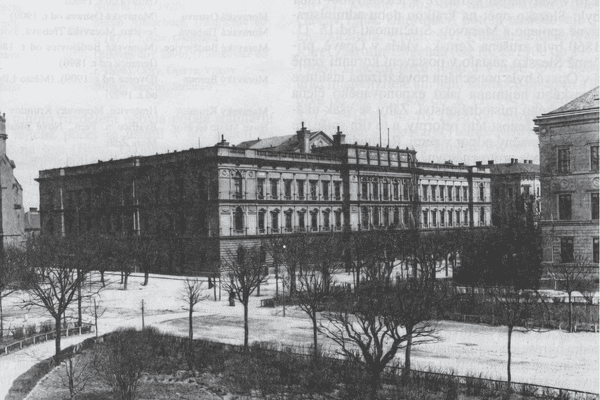
The “Red Church”
The Jan Amos Comenius Evangelical Church (Českobratrský evangelický chrám Jana Amose Komenského), known as the “Red Church (Červený kostel)”, is located on Comenius Square (Komenského náměstí) in Brno. Built between 1863–1867 in the North German Gothic style, it stands out with its red bricks and tall tower. It became part of the Evangelical Church of Czech Brethren (Českobratrská církev evangelická) after World War II. Today, the church remains an important cultural and historical site.
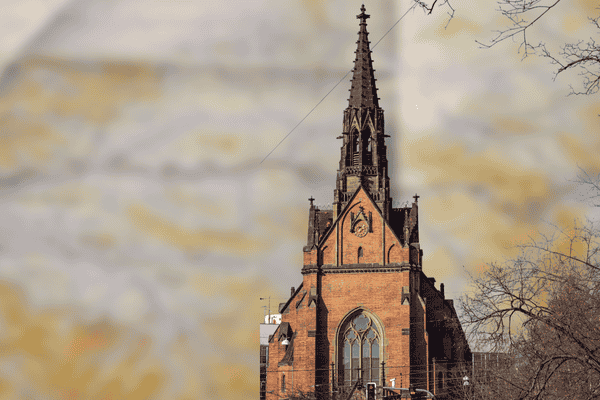
Měnín Gate
(Měnínská brána)
The Měnín Gate (Měnínská brána) is the only surviving city gate in Brno, located on Orlí Street (ulice Orlí), near Malinovský Square (náměstí Malinovského). It dates back to the 13th century and was a key part of Brno’s defensive walls. The first mention of it was in 1293. The gate played an important role during many sieges and served as an armory and ammunition store. In the 16th century, it gained a tower clock, showing its importance to the citizens. After World War II, it underwent major renovation in the late 1970s and was transformed into an exhibition space managed by the Brno City Museum (Muzeum města Brna).
Špilberk Castle
Špilberk Castle (hrad Špilberk) is one of Brno’s most famous landmarks. Built in the 13th century, it started as a Gothic castle. Later, it became a Baroque fortress and even a prison under Emperor Joseph II. During World War II, it served as a prison again. Today, it’s a museum and a place for exhibitions, offering beautiful views of Brno.
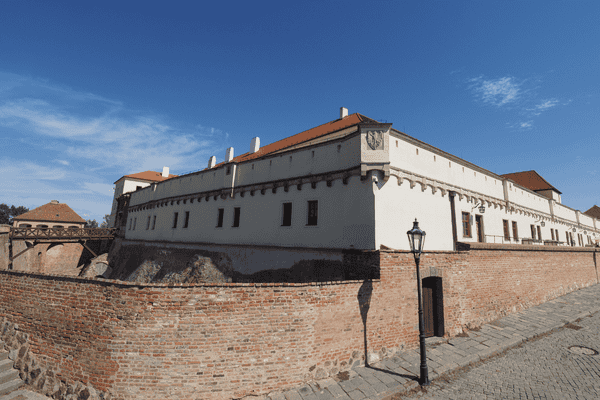
Old Brno Abbey
(Starobrněnský klášter)
The Old Brno Abbey (Starobrněnský klášter), also known as the Monastery of Old Brno, was founded in 1323 by Queen Elisabeth Richeza (Alžběta Rejčka). Initially, it served as a Cistercian convent, and Queen Elisabeth was buried here along with Henry of Lipá (Jindřich z Lipé). After the dissolution of the order in 1782, the monastery was handed over to the Augustinians, who left their original monastery at the Church of St. Thomas (kostel sv. Tomáše). Since then, the Old Brno Abbey has been the Augustinians’ home and a place of significant events, including Gregor Mendel’s genetics research.
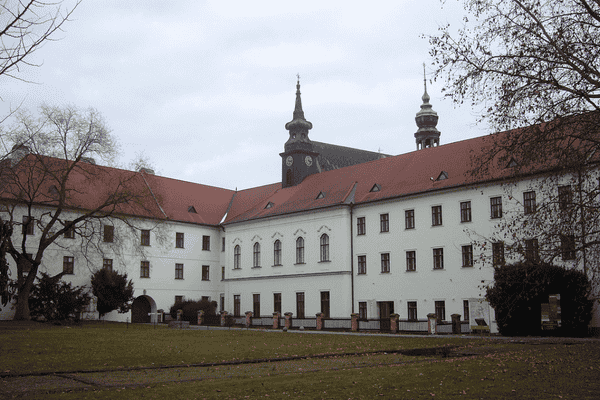
Mendel Museum
The Mendel Museum of Masaryk University (Mendelovo muzeum Masarykovy univerzity) is in the former Augustinian Abbey (Augustiniánské opatství). Gregor Johann Mendel, the “father of genetics,” worked there. The museum opened in 2002 and features Mendel’s work, including his manuscript “Experiments on Plant Hybrids (Pokusy s rostlinnými hybridy).” You can also see interactive displays and the garden where he studied peas.
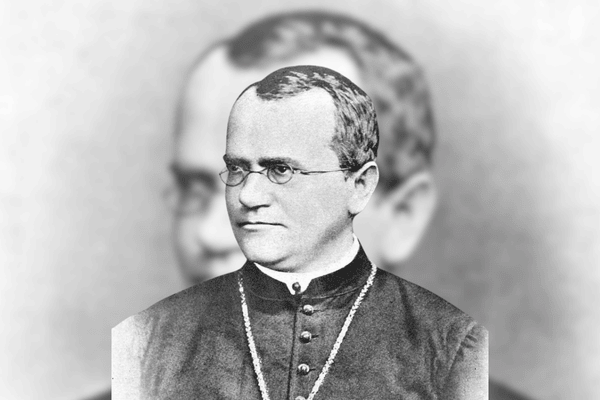
Lužánky Park
Lužánky is the oldest public park in the Czech Republic, located in the Brno district of Černá Pole. Established in 1786 on the site of a former Jesuit monastery, it once served as gardens and a place for meditation. During the reign of Emperor Joseph II, the land was given to the city. In the 19th century, gardener Antonín Šebánek transformed it into a landscaped park with rare trees. Lužánky is now a popular recreation spot with a pavilion, an artificial stream, and various monuments, including a replica of the Joseph II Monument (Pomník Josefa II).
Villa Tugendhat
The Villa Tugendhat (Vila Tugendhat) in Brno, designed by Ludwig Mies van der Rohe and Lilly Reich, is a modernist architectural masterpiece. Built between 1929–1930, it was a wedding gift for Greta and Fritz Tugendhat. The villa’s innovative design, based on a steel frame and large glass surfaces, creates a seamless connection between the interior and the surrounding environment. In 2001, UNESCO declared it a World Heritage Site. After serving as a school and a rehabilitation center post-war, the villa underwent a complete renovation between 2010–2012, restoring many original details like the unique onyx wall.
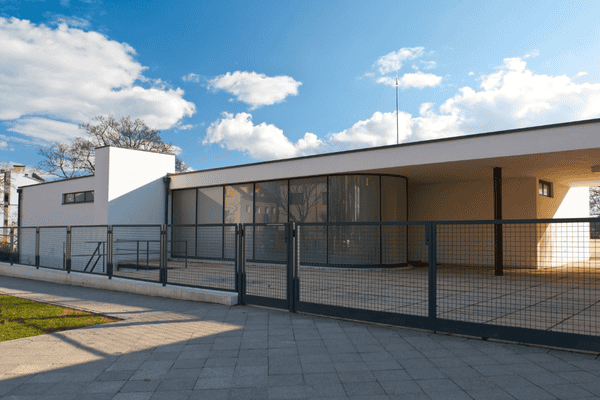
The Brno Crematorium
(Brněnské krematorium)
The Brno Crematorium (Brněnské krematorium), designed by architect Ernst Wiesner, is a functionalist structure built between 1926–1929 at the Central Cemetery (Ústřední hřbitov) in Brno. It is an exceptional example of sacred architecture, inspired by Egyptian pyramids and Christian churches. The white ceremonial hall (obřadní síň), surrounded by travertine columns, symbolizes a coffin surrounded by mourners. A characteristic chimney connects the earth to the sky. The first cremation ceremony took place on April 8, 1930. The crematorium, along with the ceremonial hall, became a monument in 1958 and gained national cultural heritage status in 2017. Wiesner combined functionalism with deep symbolism, creating a remarkable landmark on the southern edge of Brno.
The Jewish Cemetery
The Jewish Cemetery (Židovský hřbitov) in Brno is the largest in Moravia. It opened in 1852 in the Židenice district and covers 29,500 m². You can find about 9,000 gravestones here, including the graves of famous people like Hugo Haas, an actor, and Otto Eisler, an architect.

Brno Dam
The Brno Dam (Brněnská přehrada), also known as Prýgl, is the largest artificial water reservoir on the Svratka River. Built between 1936–1940, it covers 259 hectares and reaches a maximum depth of 23.5 meters. Initially, it provided drinking water for Brno, but now it’s a popular place for recreation, water sports, and fishing. Below the dam, you’ll find the Kníničky Hydroelectric Power Plant (Vodní elektrárna Kníničky). During World War II, German soldiers tried to destroy the dam, but the courageous manager František Šikula prevented it. Today, it hosts cultural events like the Ignis Brunensis fireworks festival.
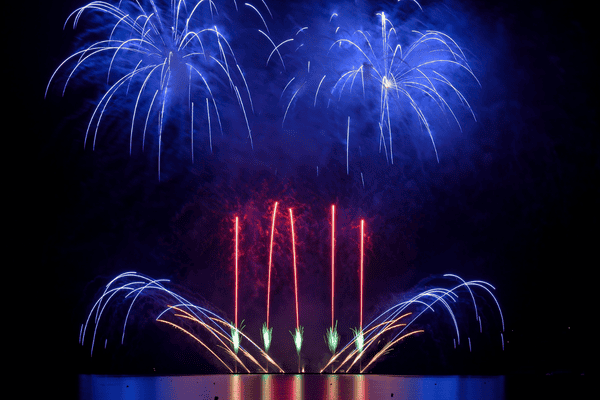
Ignis Brunensis
Ignis Brunensis is a famous fireworks festival held in Brno since 1998. Every year, thousands of people watch fireworks over the Brno Dam (Brněnská přehrada). The fireworks are synchronized with music, making the event even more special. There are also shows in parks like Denis Gardens (Denisovy sady) and at Špilberk Castle (hrad Špilberk). Teams from around the world compete, and many prizes are awarded. It’s a major event, but some worry about noise and environmental effects, especially near the dam.
Join Our Vibrant Community
Are you passionate about discovering the hidden gems of Vienna and its surroundings? Follow us on social media and become part of our enthusiastic community!
Why Follow Us?
- Exclusive Content: Each post is a labor of love, taking between 10-30 hours to create. We share breathtaking photos, captivating stories, and invaluable tips.
- Stay Updated: Never miss out on exciting events, new attractions, and must-visit spots in and around Vienna.
- Support Independent Projects: We are an independent project, and your follows help us cover the costs of running this page. Your support is crucial!
Your Support Matters!
Every follow, like, and share directly supports our work. It helps us continue bringing you the best content and ensures we can keep this site running. By following us, you’re not just staying informed – you’re helping us grow and thrive.
Don’t miss out! Click the links above and start following us today. We can’t wait to connect with you!

